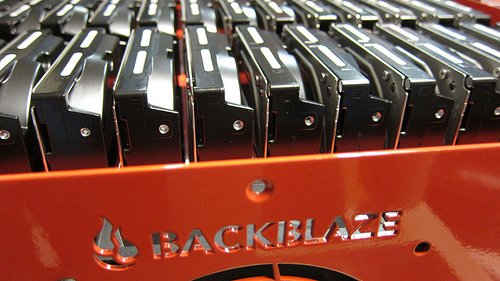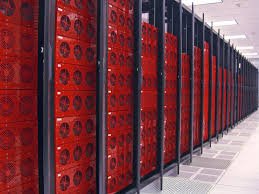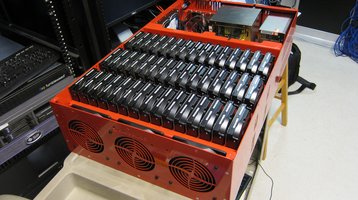Cloud data backup provider Backblaze has put its infrastructure up for open scrutiny in a bid to outsource a study on its performance.
BackBlaze offers online backup services from a data center where racks of its own custom-built storage “pods” are crammed with 41,000 consumer-grade hard drives. It says the set up is more cost-effective than enterprise grade storage hardware, and now it is is publishing three years of raw data about the reliability of its hard disk drives (HDDs), for analysis, by anyone. The logic is that patterns in the information- which relates to everything from failure rates to lifespans – will help the company to make more informed decisions in its future hardware strategy.
It’s yours to examine
“You may download and use this data for free for your own purpose,” says an explanatory note on BackBlaze’s web site. “We ask three things. Cite Backblaze as the source if you use the data, accept that you are solely responsible for how you use the data and do not sell this data to anyone.”
Information on drive statistics is contained in two files, one containing the 2013 data and one containing the 2014 data. The company plans to release 2015 results when they’re available.
The service provider uses consumer-class HDDs to keep costs down but needs better information about reliability in order to maximize the advantage over using more expensive enterprise-class drives.
“There are lots of smart people out there who like working with data, and you may be one of them,” said Backblaze engineer Brian Beach, in a company blog. “Now, it’s your turn to pore over the data and find hidden treasures of insight. All we ask is that if you find something interesting, that you post it publicly for the benefit of the computing community as a whole.”
The information is assembled as Backblaze takes a daily snapshot of every operational hard drive in its estate. Data gathered includes basic drive information along with the SMART (Self-Monitoring, Analysis and Reporting Technology) statistics reported by the drives. The data also includes which drives have failed and after how much time and data was written to them.
A previous study revealed that Western Digital’s drives last longest (2.5 years on average) while Hitachi’s and Seagate’s lasted 2 and 1.4 years, respectively.
If you are interested in learning more register now for our free webinar with OSISoft and contribution from Hewlett Packard.



